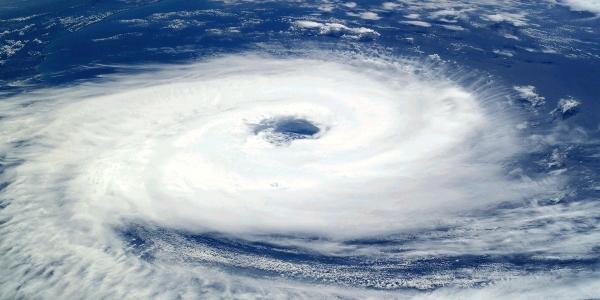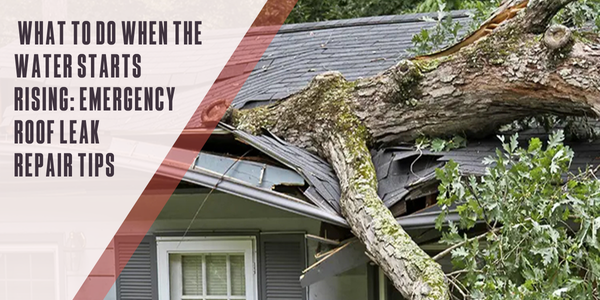Managing Storm Season as a Homeowner

By Cass Jacoby.
Understanding the process following a storm event helps you plan for realistic repair timeframes.
When a weather event happens, your roof isn’t the only thing experiencing pressure. Storms damage hundreds of homes and roofs, and following a big weather event, contractors are more in demand than ever. If your home has been affected by a storm you might be feeling the pressure of finding someone to repair it quickly. Here is what to do as a homeowner after a storm hits.
Prepare pre-storm
As with almost everything, it is better to prepare beforehand. You want to be proactive about preventing roof damage, so before storm season hits make sure you check the condition of your roof and address any issues. Prepare your home for high winds and heavy rain and do research on reputable contractors before a storm.
Contact insurance
Contact your insurance company to see what your policy covers for bad weather. Depending on the amount of damage you sustain you may want to consider filing a claim with your insurance company. Estimate how much it will cost to repair or replace any of your damaged property. Remember that you need to pay a deductible. If the incident has caused an estimated $1,000 worth of damage, and your deductible is $1,000, then it may not be worth it to file a claim. If you do file a claim, a contractor can work with the insurance adjuster to ensure all damages are addressed and noted.
Assess damage
After the storm, grab your camera or smartphone and start taking pictures and capturing video, it is also helpful to take notes. It is important to document everything that is damaged before starting to replace or to restore your roof. Oftentimes damage from a storm is not visible to the untrained eye, which is why you should have a qualified roofing contractor come and inspect your home.
A contractor will help you look for water spots, which is a sign of a leak, in which case you will need an emergency tarp to prevent further damage. A contractor will check your shingles, soft materials (like chimney vents and other soft metals on your roof) and gutters. Your contractor will also walk the perimeter with you to see if there is any damage to other parts of the home and check for debris that may have fallen off of your home.
Avoid further damage
While waiting for a contractor to start working on repairs, do your best to prevent further damage. If water and wind are getting into your home, you can make temporary repairs, like putting plywood over a window. In an article from Click Orlando, Technical director for the Florida Roofing and Sheet Metal Contractors Association (FRSA) Mike Silvers cautioned against putting tarps on your roof unless necessary to stop major leaks to avoid further damage from screws, nails and foot traffic.
Try to be patient
Should your home sustain damage in a storm, it is important to get your name added to a contractor’s waitlist quickly. Mike Silvers suggests contacting several licensed roofing companies and finding someone in your area with a connection to your community. When something like a hurricane passes through there is significantly more demand for contractors, so the best advice is to be patient with your local roofers as they bounce from repair to repair.
You shouldn’t feel like you are under too much pressure to sign a contract or deliver a deposit prior to work being done, so be wary of fast-moving processes that are overwhelming or sound too good to be true. Making repairs post-storm is high priority and something to attend to quickly, but that doesn’t mean important repair work should be rushed or that you should have to make terribly hasty decisions.
Remember that significant weather events can disrupt the steady supply chain roofing material manufacturers have. When a storm tears through the country, demand for new material skyrockets and not every manufacturer will be prepared with the necessary materials to fix so many roofs so fast. Be mindful that materials can become scarce and be patient as you wait for a contractor to begin work.
Conclusion
Roof work quickly becomes an emergency following an extreme weather event. Likely, contractors in the area will be busy for weeks, especially if they are closer to the damage. It may be more difficult to get non-storm related damage repaired post-storm because there will be a significant backlog of roof work to be done to recently damaged and neighboring areas affected. The best tool you will have following a storm is patience, understand that contractors are working based off of priority of damage and there is a process to getting repairs done.
Have a question? AskARoofer.
Find your local roofing contractor in the RoofersCoffeeShop® Contractor Directory.
About Cass
Cass works as a reporter/writer for RoofersCoffeeShop and AskARoofer. When she isn’t writing about roofs, she is writing about movies for her Master's degree and dancing with her plants.













Comments
Leave a Reply
Have an account? Login to leave a comment!
Sign In